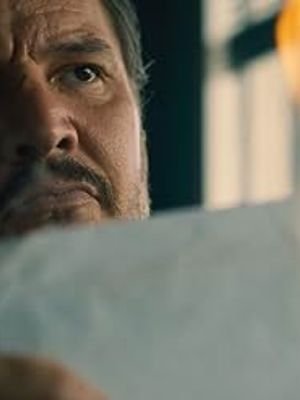
Freaky Tales is a middle finger to white-power turds disguised as a nostalgic tribute to Oakland, California in 1987, created by two of the captains behind Captain Marvel and Sundance. Freaky Tales is sometimes riotously fun and, frankly, much better for being so direct about its aims. Nevertheless, despite this film’s balance of both sides, it fails to engage fully or feel like it had a lot of fun.
The movie opens with Too $ Hort delivering the story of an eerie green light that hung over Oakland (the words appear on screen combined with an ’80s-styled 8-bit background featuring static VHS tracking errors). So it tells me right away what I’m in for – a fairy tale about underdogs and sticking up to bigots. It’s just a funny premise that leads to four chapters where various people meet against all odds.
Chapter 1: Punks vs Nazis
I always enjoy punks-vs.-Nazis movies because they’re such an odd sub-genre, and this part of Freaky Tales was no exception. The production design and cinematography have that grindhouse thing going on. It does not share the same impact as the others of the movie but there is something about this semi-true tale involving a punk club who fights back Neo-Nazi fuckers who were harassing them. There’s plenty of grain on display here, and cheaply splattered VFX comes across more like stylistic choices than budgetary restrictions.
Freaky Tales also comes with moments that are unabashed “fuck you”s to white-power turds while maintaining eye contact throughout; their band members aren’t the only ones seeking revenge against their neo-Nazi nemeses through pulp fiction gory means in completely bloody ways These violent scenes/scenes are happy moments between archenemies which implies that when Freaky Tales eventually reaches its intended destination spot, the film itself enjoys very much being there.
Chapter 2: Pedro Pascal Is Here…
… at his most Pedro Pascal. Pedro plays a bone-breaking enforcer for a mob, which is basically just what fans of “The Mandalorian” and “Game of Thrones” see the actor as. However, his character is emblematic of one of the biggest issues with Freaky Tales. He represents a Western stereotype, that violent guy who doesn’t fit in anywhere – not at home or on the range – but here he’s too quiet about trying to redeem himself.
The rest of the cast, including Normani and Dominique Thorne a rap duo looking for a break, have incredible charisma. Ben Mendelsohn’s “The Guy” chews every piece of scenery that’s put in front of him and Jay Ellis’ portrayal of real-life Golden State Warriors legend Eric “Sleepy” Floyd gets a hilarious, cartoon-superhero spin. All these things work on paper and I may be starting to like this film more than I thought while writing this paragraph, yet then I remember that it all falls kind of flat onscreen.
Chapter 3: Under the Influence
Freaky Tales is an anthology that does not hide its influences on its sleeve. There are nods to genre greats like David Cronenberg, John Cassavetes, and John Carpenter. However, there is an absolutely wild kung-fu revenge sequence whereas the titles of the chapters and even the film Freaky Tales are all derived from the Too-Short Albums. However, Quentin Tarantino has had the strongest influence in this film especially as he has built his career around pastiche. For one thing however, calling Freaky Tales a wannabe Pulp Fiction feels too harsh considering that three decades after Pulp Fiction was released we keep seeing a number of movies that hardly distinguish themselves from it.
In a diner characters from one story pass by those from another story. There is also a car scene with black and white rear projection footage playing in the background and right in the middle of everything there is a monologue about “The best underdog movies of all time”. Still, even if you take the name, it comes from Too Short’s Born To Mack LP track but can also be considered synonymous with a reworking of “pulp fiction”, sort of.
It’s strange to see something that pays homage to something else that was itself homage because Freaky Tales does not recontextualize that homage into something new.
Chapter 4: Where It All Should Come Together
Especially for those who grew up in Oakland or love hearing myths about their hometowns, this chapter will have crucial meaning. After my Sundance screening, Anna Boden stated that she believed part of her job was to ensure that people who weren’t from Oakland could also become invested in the film. This movie loves both where it takes place and what inspired it during this period so at times these two realms intertwine seamlessly adding an overall vibe or energy at some specific points. This being said, however, Freaky Tales does not bring enough uniqueness on board to make them compete with the films they borrowed from its life.
Conclusion
Freaky Tales is a (sometimes very) fun ode to a specific time and place. There are some genuinely amazing moments when it basks in its genre influences. But while it’s an interesting collection of stories and performances that Anna Boden and Ryan Fleck have put together, it never truly brings about the united tissue of Freaky Tale’s chapter-based structure as the movies that inspired it did.
Read Freaky Tales Review on Fmovies
Also, Read:
